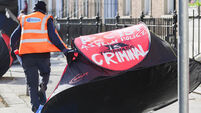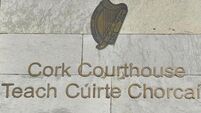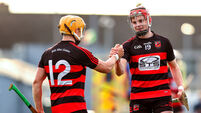Irish was popular before independence because it was subversive
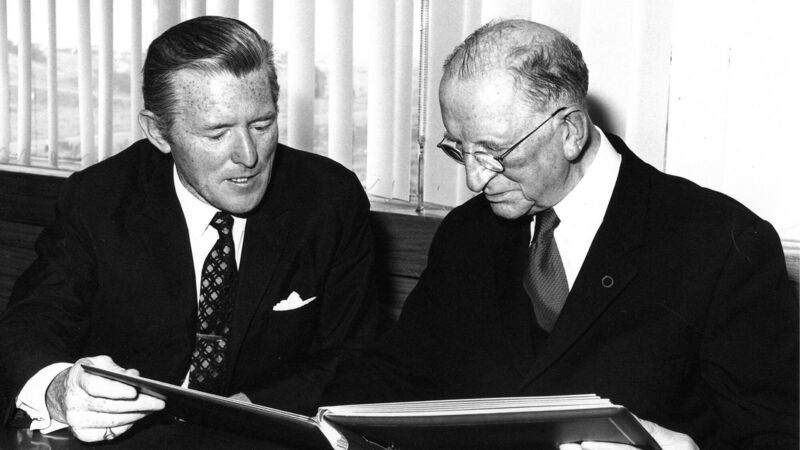
President of Ireland Eamon de Valera with Dr Brendan O'Regan (left) at Shannon Airport at the opening of the world's first airport duty-free shopping zone in 1947. Many saw learning Irish as a link to de Valera's old vision of Ireland pre-independence. Picture: Clare County Council/PA Wire
Next Monday is, I guess, the dreaded day for many Leaving Certificate students. It’s Irish (Paper 1), and students without a convenient exemption from Ireland’s native tongue must struggle with the vexatious complications of the briathra neamhrialta and the peculiarities of the modh coinníollach. And this must be undertaken in a language the vast majority have never spoken naturally. Even those attending Irish speaking schools will rarely have bothered to use the language outside the education system; beyond the school gates, the language becomes deeply uncool for most students.
Likely, then, many candidates will find themselves resenting the remaining compulsory aspects of Irish as they grope to find an appropriate saor briathair to impress the examiners. And indeed, I can’t blame them, for at school I didn’t care much for “ár dteanga féin” either. To a 1970s teenager, the language appeared preposterously unfashionable and irrelevant — a throwback to the insular times of Éamon de Valera. It seemed, the exclusive preserve of Christian brothers, school inspectors and the culturally obsessed — not exactly our role models.
Young people tend to reject that which is forced upon them, and so it was that compulsory Irish was all wrong for the youthful psyche. We were far more likely to embrace that which is seen as subversive, and it will doubtless surprise many that the Irish language once fell into this category. At the turn of the second last century, young people including my grandmother, as she once told me, flocked to Irish speaking classes organised by the newly founded Gaelic League. The attraction was undoubtedly that the Irish language had become deliciously subversive; an ability to speak it was a way of differentiating oneself from the English-speaking authorities. Indeed, a facility with the language would soon become an almost compulsory badge of honour for Irish nationalists.
With independence, the language revival stuttered to a halt. My grandmother certainly seems to have lost interest, since I never heard her speak a word of Irish. The attitude of most people in the new state could best be described as benign indifference towards the language, tinged with some embarrassment at a general inability to answer even a basic greeting as Gaeilge.
Was Irish independence the culprit? Had it removed the need for the expression of national distinctiveness still felt by many among the nationalist community of West Belfast, where there is a thriving Gaeltacht Quarter? Whatever the reason, Irish conversation has become the almost exclusive preserve of dedicated Gaelgoiri or as an occasional stilted ploy, used abroad for exchanging private thoughts about the idiosyncrasies of other nationalities.
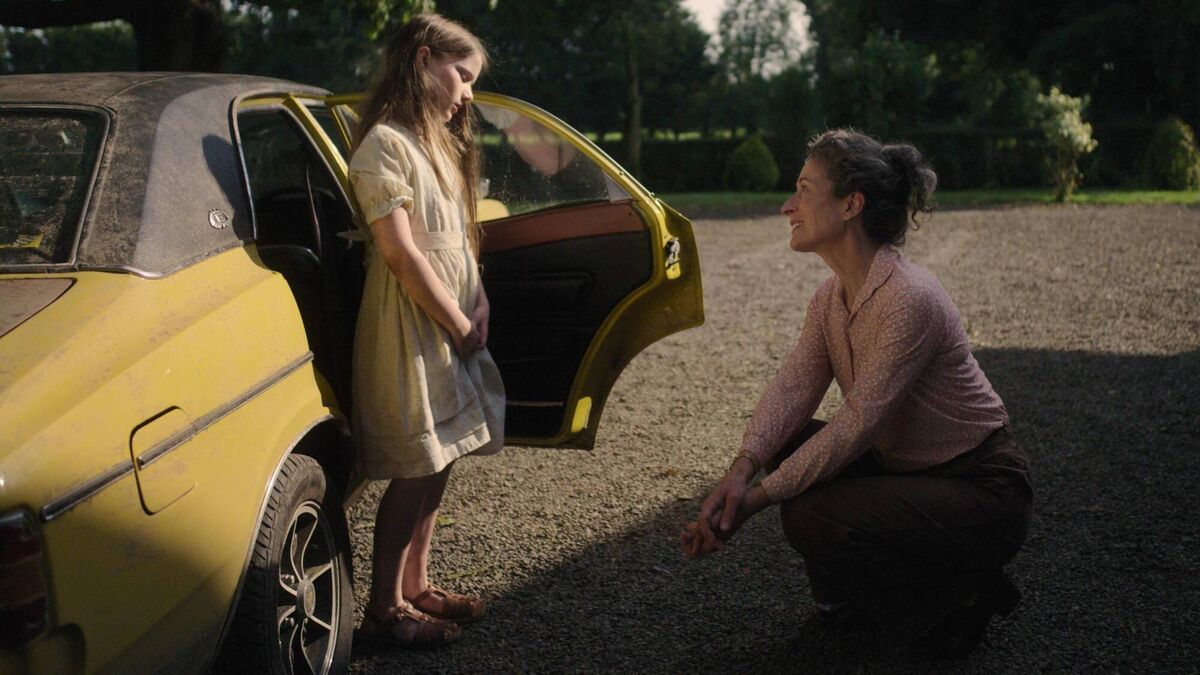
Green shoots have, of course, sprouted from time to time. Gaelscoileanna have been a huge success; TG4 has succeeded in making the language accessible, while Irish speaking circles have been springing up nationwide. It is fair to say, however, that these initiatives have not been truly transformative in the sense of putting Irish at the cultural centre of the national discourse, for it is still rare to encounter spoken Irish in everyday life.
Recently, however, I began hearing about the growing success of Irish language feature films. So, I popped into the cinema for the first time in years to see . Having won for Best Film award at the Berlin Film Festival, it virtually swept the board at the Irish Film and Television Awards.
There was no need to be an expert on filmography to see why this film had succeeded. Beautifully shot, with excellent production values, it would comfortably compete with the best English language movies and seems an ideal vehicle to anchor Irish in mainstream culture. It is hardly a subversive piece, however, and this had me wondering, does an art form need to ruffle establishment feathers to be accepted by youth culture?
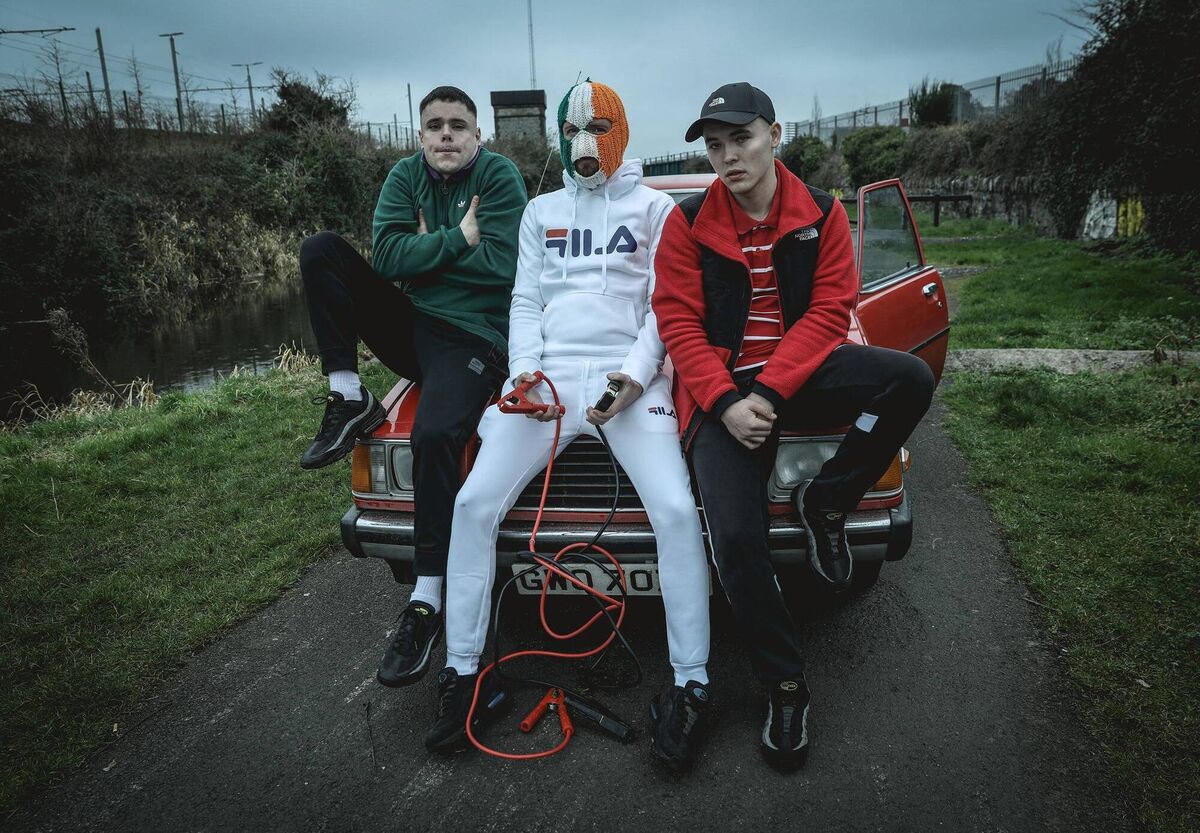
For Belfast hip hop band Kneecap, ruffling feathers is par for the course. Gaining street cred from being banned by both the UCD and RTÉ, they have become hugely popular by rapping in the Irish language while playing to packed houses across Ireland and the UK. Deeply republican and anti-establishment, they have, nevertheless, achieved what few have done — made the Irish language cool again for many young people. Is the lesson here? Does the language need to embrace youth culture more firmly — even when it is anti-establishment — if it is to be truly embraced by young people. After all, Éamon de Valera himself was once a deeply anti-establishment figure.






